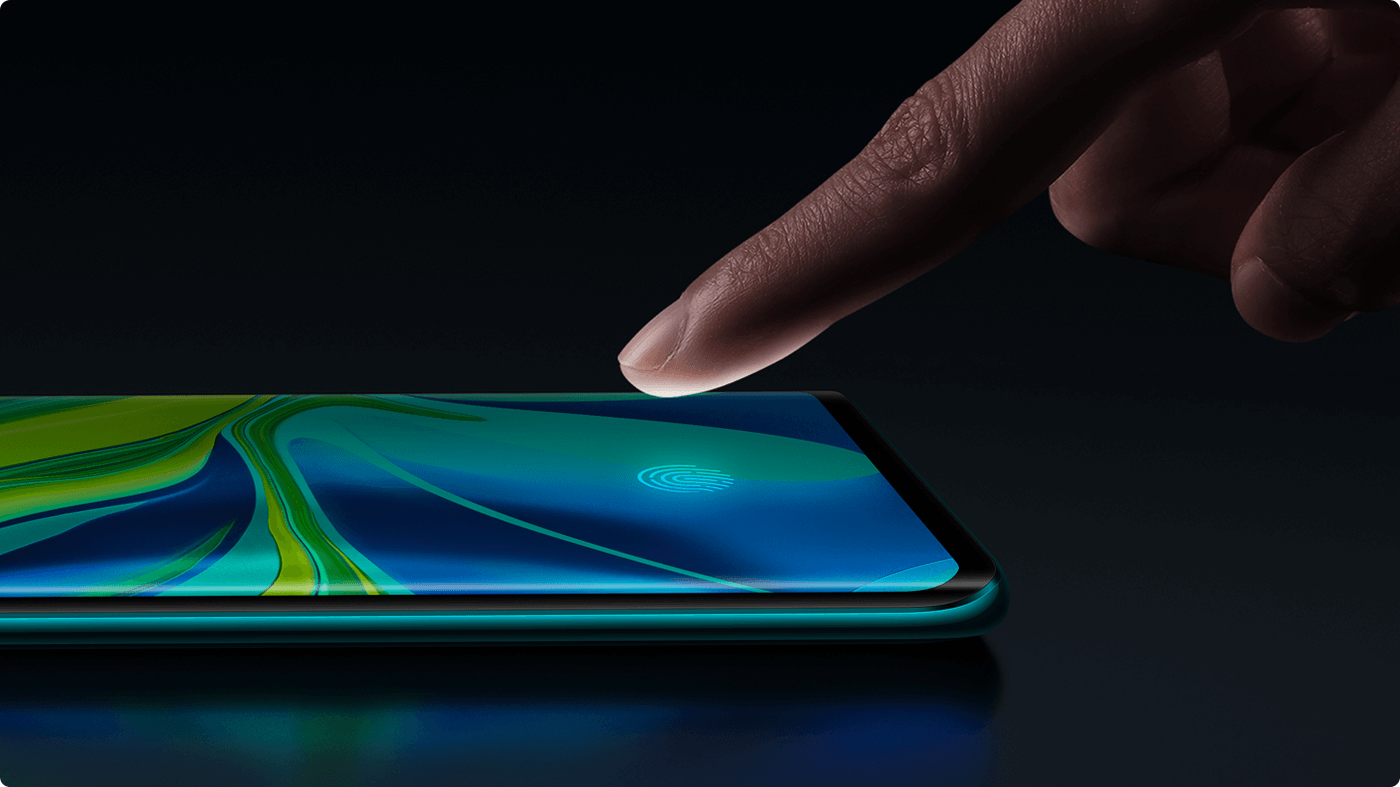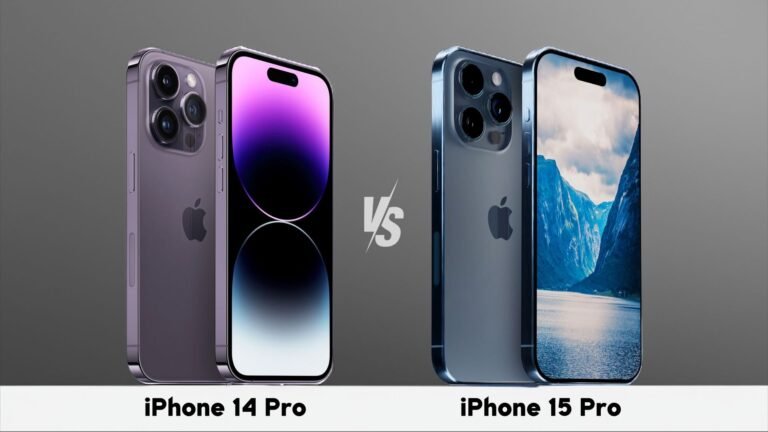This article is an in-depth comparison of the Xiaomi Mi Note 10 and Redmi K20. The choice is not easy and if you don’t know which one you should go for, this article may help you find the answer.
 |  |
|---|---|
| Mi Note 10 | Redmi K20 |
| BUY NOW | BUY NOW |
| PROS | PROS |
| Excellent camera for the price. Premium design. Includes a headphone jack. | Premium design. Great battery life. Flagship specs. |
| CONS | CONS |
| Underpowered at times. Dynamic range isn’t iPhone or Pixel good. Secondary cameras fall behind flagships. | No waterproofing. UI won’t be for everyone. Mono speaker. |
SPECIFICATIONS
| NETWORK | MI NOTE 10 | REDMI K20 |
| Technology | GSM / HSPA / LTE | GSM / HSPA / LTE |
| 2G bands | GSM 850 / 900 / 1800 / 1900 – SIM 1 & SIM 2 | GSM 850 / 900 / 1800 / 1900 – SIM 1 & SIM 2 |
| 3G Network | HSDPA 800 / 850 / 900 / 1700(AWS) / 1900 / 2100 | HSDPA 850 / 900 / 1900 / 2100 |
| 4G Network | LTE band 1(2100), 2(1900), 3(1800), 4(1700/2100), 5(850), 7(2600), 8(900), 18(800), 19(800), 20(800), 26(850), 28(700), 38(2600), 40(2300) | LTE band 1(2100), 3(1800), 5(850), 7(2600), 8(900), 34(2000), 38(2600), 39(1900), 40(2300), 41(2500) |
| Speed | HSPA 42.2/5.76 Mbps, LTE-A (3CA) Cat15 800/150 Mbps | HSPA 42.2/5.76 Mbps, LTE-A |
| LAUNCH | MI NOTE 10 | REDMI K20 |
| Announced | 2019, November | 2019, May |
| Status | Available. Released 2019, November | Available. Released 2019, June |
| BODY | MI NOTE 10 | REDMI K20 |
| Dimensions | 157.8 x 74.2 x 9.7 mm (6.21 x 2.92 x 0.38 in) | 156.7 x 74.3 x 8.8 mm (6.17 x 2.93 x 0.35 in) |
| Weight | 208 g (7.34 oz) | 191 g (6.74 oz) |
| SIM | Dual SIM (Nano-SIM, dual stand-by) | Dual SIM (Nano-SIM, dual stand-by) |
| DISPLAY | MI NOTE 10 | REDMI K20 |
| Type | AMOLED capacitive touchscreen, 16M colors | Super AMOLED capacitive touchscreen, 16M colors |
| Size | 6.47 inches, 102.8 cm2 (~87.8% screen-to-body ratio) | 6.39 inches, 100.2 cm2 (~86.1% screen-to-body ratio) |
| Resolution | 1080 x 2340 pixels, 19.5:9 ratio (~398 ppi density) | 1080 x 2340 pixels, 19.5:9 ratio (~403 ppi density) |
| PLATFORM | MI NOTE 10 | REDMI K20 |
| OS | Android 9.0 (Pie); MIUI 11 | Android 9.0 (Pie), upgradable to Android 10.0; MIUI 11 |
| Chipset | Qualcomm SDM730 Snapdragon 730G (8 nm) | Qualcomm SDM730 Snapdragon 730 (8 nm) |
| CPU | Octa-core (2×2.2 GHz Kryo 470 Gold & 6×1.8 GHz Kryo 470 Silver) | Octa-core (2×2.2 GHz Kryo 470 Gold & 6×1.8 GHz Kryo 470 Silver) |
| GPU | Adreno 618 | Adreno 618 |
| MEMORY | MI NOTE 10 | REDMI K20 |
| Card slot | No | No |
| Internal | 128GB 6GB RAM UFS 2.0 | 64GB 6GB RAM, 128GB 6GB RAM, 256GB 8GB RAM UFS 2.1 |
| MAIN CAMERA | MI NOTE 10 | REDMI K20 |
| Modules | 108 MP (7P lens), f/1.7, 25mm (wide), 1/1.33″, 0.8µm, PDAF, Laser AF, OIS 12 MP, f/2.0, 50mm (telephoto), 1/2.55″, 1.4µm, Dual Pixel PDAF, Laser AF, 2x optical zoom 5 MP (upscaled to 8MP), f/2.0, (telephoto), 1.0µm, PDAF, Laser AF, OIS, 5x optical zoom 20 MP, f/2.2, 13mm (ultrawide), 1/2.8″, 1.0µm, Laser AF 2 MP, f/2.4, 1/5″, 1.75µm (dedicated macro camera) | 48 MP, f/1.8, 26mm (wide), 1/2.0″, 0.8µm, PDAF 8 MP, f/2.4, 53mm (telephoto), 1/4.0″, 1.12µm, PDAF, 2x optical zoom 13 MP, f/2.4, 12mm (ultrawide), 1/3.1″, 1.12µm |
| Features | Quad-LED dual-tone flash, HDR | Dual-LED flash, HDR, panorama |
| Video | 2160p@30fps, 1080p@30/60/120/240fps, 720p@960fps | 2160p@30fps, 1080p@30/120/240fps, 1080p@960fps |
| SELFIE CAMERA | MI NOTE 10 | REDMI K20 |
| Modules | 32 MP, f/2.0, 26mm (wide), 1/2.8″, 0.8µm | Motorized pop-up 20 MP, f/2.2, (wide), 1/3.4″, 0.8µm |
| Features | HDR | HDR |
| Video | 1080p@30fps | 1080p@30fps |
| SOUND | MI NOTE 10 | REDMI K20 |
| Loudspeaker | Yes | Yes |
| 3.5mm jack | Yes 24-bit/192kHz audio | Yes 24-bit/192kHz audio |
| COMMUNICATION | MI NOTE 10 | REDMI K20 |
| WLAN | Wi-Fi 802.11 a/b/g/n/ac, dual-band, Wi-Fi Direct, hotspot | Wi-Fi 802.11 a/b/g/n/ac, dual-band, Wi-Fi Direct, hotspot |
| Bluetooth | 5.0, A2DP, LE, aptX HD | 5.0, A2DP, LE, aptX HD |
| GPS | Yes, with A-GPS, GLONASS, GALILEO, BDS | Yes, with A-GPS, GLONASS, GALILEO, BDS |
| NFC | Yes | Yes |
| Infrared port | Yes | |
| USB | 2.0, Type-C 1.0 reversible connector | 2.0, Type-C 1.0 reversible connector, USB On-The-Go |
| FEATURES | MI NOTE 10 | REDMI K20 |
| Sensors | Fingerprint (under display, optical), accelerometer, gyro, proximity, compass | Fingerprint (under display, optical), accelerometer, gyro, proximity, compass |
| BATTERY | MI NOTE 10 | REDMI K20 |
| Battery | Non-removable Li-Po 5260 mAh battery | Non-removable Li-Po 4000 mAh battery |
| MISC | MI NOTE 10 | REDMI K20 |
| Colors | Aurora Green, Glacier White, Midnight Black | Carbon black, Red flame, Glacier blue, Pearl White |
DESIGN
Mi Note 10:
I want to say that the Mi Note 10 has a great premium feel to it. It’s aluminum frame. And to top it all off they’re layered with Corning Gorilla Glass 5 protection. With the phone in hand gripping it feels great, I like how I don’t get this uneasy feeling when I’m holding it without a case. So this is definitely a point to good ergonomics with the help of those 3d edges from both the front and back. It’s also a plus that the buttons have good tactility and placement is great. I don’t think anybody will have a hard time reaching the buttons on this device whether they have small or large hands.
I must say the front of the Mi Note 10 is quite the looker. The bezels on the device are on the slim side but still not the thinnest. I don’t mind having a crimped edge screen at all, it doesn’t really bother me.
Overall, I’m really love the design and build of this device. It isn’t the thinnest and lightest device but the weight distribution is really good.
Redmi K20:
The design is pretty much identical to redmi k20 pro. We get the gorilla glass 5 protected glass sandwich build and even the water-resistant P2I nano coating is present. In our time with the K20, it felt very premium in hand with a curved glass.
It’s got a prime design, I really like the looks. Of course, the build looks good, it does come with the regular caveats for a glass build. It’s slippery, it picks up fingerprints, so use the K20 with case.
CAMERA
Mi Note 10:
The Note 10 is Xiaomi’s first with five cameras. In addition to the insane 108 MP sensor, we also have two zoom lenses (one 2x and the other 5x), a wide angle, and another dedicated for macro.
Redmi K20:
Selfie camera has two light strips along the sides and makes a cool sound effect, when sliding up and down. It’s unique and I really liked it but if you don’t like it Redmi give you an option to turn it off.
At the back, the primary camera is a 48 megapixel with an F/1.75 lens. Now this here is the Sony IMX 582 sensor, it’s pretty much the same as the IMX 586 that we’ve been saying on other flagships but this one doesn’t have support for 4k 60fps video, so it’s not a big difference. The K20 also loses out on a laser assessed for autofocus but that isn’t seem to make any noticeable change.
DISPLAY
Mi Note 10:
Mi Note 10 features a 6.47 inch full HD plus AMOLED panel with a resolution of 2340×1080. We get Corning Gorilla Glass 5 protection on top and it does look amazing. Obviously, this isn’t super or dynamic AMOLED so if your device is rocking one of those panels and you’re looking at this one you might feel it isn’t as vibrant. Though, I must say it isn’t a bad panel in fact colors are vibrant enough for me and blacks can be deeper but I’m not really complaining. If it’s anything about this panel I wish This display can go up to a brightness of 600 nits and that’s pretty good. When it comes to media consumption this panel is awesome, no complaints.
Redmi K20:
We’ve got the 6.39 inch full HD plus AMOLED panel. There is no notch or punch hole here to distract us. The entire front of the phone is dominated by this full screen display. The K20 offers an amazingly immersive media viewing experience. The K20 can get pretty bright outdoors with a peak brightness of 600 nits.
AUDIO
Mi Note 10:
The audio coming from the single firing speaker. It can get pretty loud for a single speaker. At 80% to max volume, the sound could come up a little bit distorted and of course the soundstage from this one speaker isn’t the most full. Lows are basically non-existent.
Redmi K20:
Even the sound quality from the downwards firing single speaker, it’s quiet loud but be careful while holding it in landscape mode its positioning kind of makes it pretty easy to cover up. It is worth mentioning that there is no stereo speaker setup here but the headphone jack is present.

PERFORMANCE
Mi Note 10:
It supports a Qualcomm Snapdragon 730G chipset coupled with an Adreno 618 GPU. This device handled most tasks I threw at it with ease. Specifically, a lot of web surfing, some photo editing, and light gaming. Our unit has 8GB of RAM and 128GB of internal storage.
Redmi K20:
It comes with the Snapdragon 730 which is nearly identical to Snapdragon 730G. It is still one of the best mid-range chipsets out there and it can’t compete with the Snapdragon 855 in terms of benchmark scores with day-to-day usage.
The entire user interface was smooth and even something like say split-screen multitasking it was handled without any hiccups.
The K20 comes in two variants, it’s got either 64GB of storage or 128GB of storage. This is pretty important, since there is no room for memory expansion via microSD.
For gaming, we have the Adreno 618 GPU and it does really well even with demanding titles like PUBG. We never faced any drop frames and it remains responsive throughout.
SOFTWARE
Mi Note 10:
We get Android 9 PI skin with MIUI 11 on top. The interface is clean, simple, and functionally customisable. Though, having the Chinese MIUI does take some getting used to when compared to the global version. We never really felt any slowdowns when it came to the usual browsing the web and social media, multitasking between apps and even general gaming.
Redmi K20:
MIUI 10 build on the top of Android 9 Pi. It’s powered efficient as always and it’s paired with a 8-nanometers Snapdragon 730. It comes with the same things that we expect of it but what surprised me was the fact that the K20 comes with the poco launcher by default.
Redmi has taken full advantage of the AMOLED screen too. There’s a system-wide dark mode option that’s available and that looks absolutely awesome and you can also let the screen be always-on since it’s AMOLED. And finally there’s a game mode, well that’s not exclusive to the K20 but what is unique here is the software enhancements.
SECURITY
Mi Note 10:
The fingerprint scanner is one of the latest generation optical in display ones and it’s pretty quick. It takes about half a second to unlock the device and I believe it can feel even faster, if we speed up or disable the unlocking animation.
The face unlock is also pretty quick. It unlocks the device around the same time the fingerprint scanner does.
Redmi K20:
We have an in-display fingerprint scanner, it works well. Face unlock is also present but the selfie camera takes a bit of time to go up and down. However, we will suggest you to use fingerprint sensor.
BATTERY
Mi Note 10:
The Mi Note 10 gets a crazy 5260 mAh battery that supports 30 watt fast charging technology. It takes about an hour to charge this device with the included charger and that might not sound like much.
Redmi K20:
It’s got a massive 4000 mAh battery inside, despite packing such a big battery, the K20 is not thick. The 191 gram weight has distributed pretty evenly across the device too. So you don’t really feel that weight even if you’re using the phone.
We managed to end most days with around 35 to 40 percent left in the tank which means that even if you are a heavy user the K20 should have no problems lasting a single day on a full charge.
Talking about charger Redmi have included an 18-Watt fast charger in the box which is great because that’s the fastest charging speed the K20 supports.
WHICH ONE YOU SHOULD BUY?
| I think Mi Note 10 is a more good device than Redmi K20 because it offers a good camera, display, battery, and performance. Personally, I will like to buy Mi Note 10. |

Expert Reviews For Mi Note 10:
By T3
the performance is fast and consistent and at par with smartphones with higher specifications.The Mi Note 10 runs on MIUI 11, which is based on Android 9. We would’ve wished that it ran on Android 10 but Xiaomi did say that the update is soon so we’ll…By Techadvisor
Priced higher than Xiaomi’s flagships, this is in fact a mid-ranger – but one with a balanced specification in terms of performance, photography and design, and incredible battery life.Though they fared reasonably well in our tests, the unique selling…By DigitalCameraWorld
The Xiaomi Mi Note 10 isn’t just a 108MP camera phone, it’s also a competitively priced handset in almost every respect, combining great design with a big battery, fast charging, and an in-display fingerprint scanner. You won’t get a sharper camera…By TheStraightTimes
Last year saw the return of the smartphone megapixel (MP) race as first Sony, then Samsung, unveiled high-resolution camera sensors.Samsung, for one, topped its own 64MP sensor, which it announced last May, with an even higher-end 108MP sensor later…By NotebookCheck
If you include the price point of the Xiaomi Mi Note 10, there’s hardly a better offer at the moment if you’re looking for one of the best cameras and very long battery life.Xiaomi Mi Note 10 – 2019-12-2012/20/2019 v7Florian SchmittChassis86%Keyboard69…Expert Reviews For Redmi K20:
By AndroidAuthority
The Redmi K20 and K20 Pro were launched earlier this year as a one-two punch at the OnePlus 7 and the many affordable flagship competitors it has spawned. The lower-end of the pair, the Redmi K20 is a premium mid-range smartphone that is aimed squarely…By MobileIndian
Redmi K20 is a polished device from Xiaomi. The device comes loaded with a premium design language and the display looks crisp. The battery performance is decent and you will face no trouble in day-to-day tasks. The daylight camera performance is good,…By IndiaToday
Yes. You should. And no, it’s not overpriced. The Redmi K20 offers great value at its price. For the Redmi K20, Xiaomi hasn’t compromised in any departments, whether it is design, display, performance, software, or battery. The only area I believe the…By GadgetsNow
The Redmi K20 has a lot going for itself. Xiaomi, on its part has ensured that anyone who buys this smartphone doesn’t feel that he or she is missing out a lot by not buying a Pro version. The two handsets have the same design, display and battery…By Gadgets360
There has been some outrage over the Redmi K20 being overpriced, with many fans and prospective buyers expressing disappointment that the company did not target the sub-Rs. 20,000 segment. Here’s the bottom line, though — the Redmi K20 is the most…

![iPhone 14 vs iPhone 13 vs iPhone 12 [Updated Guide]](https://www.theworldsbestandworst.com/wp-content/uploads/2022/11/iPhone-14-vs-iPhone-13-vs-iPhone-12-768x432.jpg)




